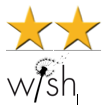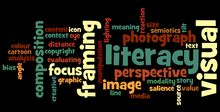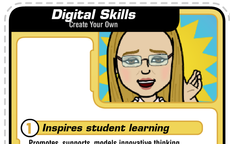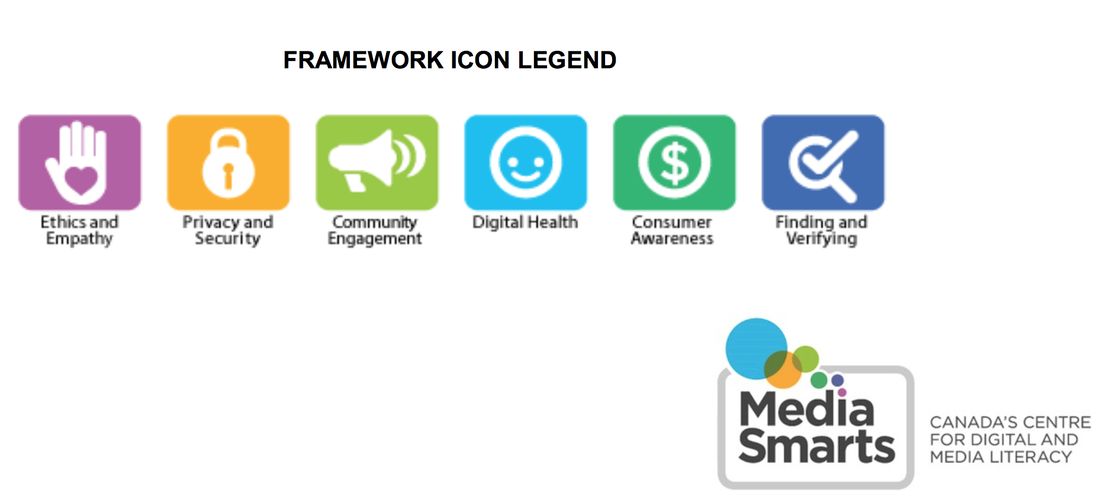8.2 Media in Education - Making it Happen!
|
This week we will focus on the following:
|
Readings |
|
Focus Question:
How might students actively make media in the classroom to support cross curricular learning?
Activating and Reviewing Media and Digital Literacy
|
New Media = New Ways to Communicate Messages
To develop an understanding of the importance of new media, let's review how media messages are created in a digital world. |
Building on Prior Knowledge
To enhance your understanding of the importance of teaching about media and digital literacies, let's review how media education happens and look back on the essential elements of media education. |
|
|
Media Literacy Resources and Media Literacy Week - Nov 2-6th
Click on this icon to review the framework from Media Smarts |
Analyzing and Reflecting on Digital Media

Today, you will work as author and editor for each other.
FIRST: You will undertake an investigation of the media and messages you've created on your blog site. Use Alan Levine's post How to Blog Like a Digital Alchemy Champion to review, analyze, reflect and make adjustments to your media making understanding. Consider the media triangle (audience, production, message, context) as you become creator, user and consumer of media content.
NEXT: You'll analyze and examine media created by your classmates, as a reflection of your creations within the digital environment. At each table one person will take on the role of author, showing and sharing your blog production and internship media production. The others will provide critical and specific feedback for the author. It is then up to the author to decide and chose to act on the recommendations, implement suggestions or not. Authorship remains the domain of the author.
FIRST: You will undertake an investigation of the media and messages you've created on your blog site. Use Alan Levine's post How to Blog Like a Digital Alchemy Champion to review, analyze, reflect and make adjustments to your media making understanding. Consider the media triangle (audience, production, message, context) as you become creator, user and consumer of media content.
NEXT: You'll analyze and examine media created by your classmates, as a reflection of your creations within the digital environment. At each table one person will take on the role of author, showing and sharing your blog production and internship media production. The others will provide critical and specific feedback for the author. It is then up to the author to decide and chose to act on the recommendations, implement suggestions or not. Authorship remains the domain of the author.
The peer review process is not an easy one.
Learn how an elementary classroom can provide insights into how to provide effective feedback comments. This class of students in California share best practice in writing good comments on a blog. Their ideas are applicable here.
Learn how an elementary classroom can provide insights into how to provide effective feedback comments. This class of students in California share best practice in writing good comments on a blog. Their ideas are applicable here.
|
Watch more about 'warm and cool feedback' from this page on the Powerful Voices for Kids site. Scroll down to the bottom of the page to view the video.
Peer Review
Use ONE of the peer feedback suggestions to provide comments and feedback to your classmates on their work in media production. Remember that constructive and focused feedback will provide opportunities for personal learning. Each person can provide guidelines or establish ground rules for the peer reviewers to follow when providing feedback to your blog and media creations. This can be the format, content or suggestions you would like from your peers as a result of this process e.g. I'd like two stars and a wish OR I need help figuring out how to change it OR I have an issue with ..... and need your suggestions. The suggested response can take the form of
Each person should take THREE MINUTES to share while others apply 'active listening skills'. When each person has had a turn to share, ask some open, honest questions to probe further. Then complete ONE of the feedback styles for each person who presented. POST A BRIEF comment to ONE POST
|
|
Personal Learning Statement

FIRST: ACCESS the OCT standards of practice.
Review the five standards for professional practice: commitment to students and student learning, professional knowledge, professional practice, leadership in learning communities, ongoing professional learning. Examine the four standards for ethical practice: care, respect, integrity and trust.
THEN: CREATE a personal learning statement - a collection of words, actions or images. Put your name or avatar image on the page. This page can be created in any format you chose (paper/pencil/marker or digital media collected in a word document). This is dependent on your personal preferences. Think creatively and apply the media literacy triangle (audience, text, production) to this process. Consider integrating a Wordle, Tagxedo, Tagul, QR code (linking to your blog) or a Trading Card (as seen at the top of this page) to your design. Think about how this piece will represent you in both real and digital educational environments.
This page can be printed and added into your portfolio binder - as a cover page, title page, introduction page - to showcase your strengths as a teacher. This page can be added to your blog site in the 'About Me' page.
Review the five standards for professional practice: commitment to students and student learning, professional knowledge, professional practice, leadership in learning communities, ongoing professional learning. Examine the four standards for ethical practice: care, respect, integrity and trust.
- Which elements do you feel are a strength for you in terms of your own teaching practice?
- How do these standards apply to your skills in teaching and learning about media and digital technology?
THEN: CREATE a personal learning statement - a collection of words, actions or images. Put your name or avatar image on the page. This page can be created in any format you chose (paper/pencil/marker or digital media collected in a word document). This is dependent on your personal preferences. Think creatively and apply the media literacy triangle (audience, text, production) to this process. Consider integrating a Wordle, Tagxedo, Tagul, QR code (linking to your blog) or a Trading Card (as seen at the top of this page) to your design. Think about how this piece will represent you in both real and digital educational environments.
This page can be printed and added into your portfolio binder - as a cover page, title page, introduction page - to showcase your strengths as a teacher. This page can be added to your blog site in the 'About Me' page.
NOW FOR SOME PLANNING TIME

Ontario Curriculum Expectations - Media
Let's explore the application of media, advertising and marketing to your upcoming classroom presentations. Time will now be given for your group to explore LESSON PLANs for this task. Consider all the elements of an effective lesson plan as you create your presentation for the audience in the classroom. Consider all the 'text' and 'media' elements integrated into the message.
How will students be actively engaged in learning about media literacy throughout your LESSON.
Review some resources available for use in your planning. Adapt and adjust these resources to suit your curriculum expectations.
Let's explore the application of media, advertising and marketing to your upcoming classroom presentations. Time will now be given for your group to explore LESSON PLANs for this task. Consider all the elements of an effective lesson plan as you create your presentation for the audience in the classroom. Consider all the 'text' and 'media' elements integrated into the message.
How will students be actively engaged in learning about media literacy throughout your LESSON.
Review some resources available for use in your planning. Adapt and adjust these resources to suit your curriculum expectations.
- Media Smarts - Lesson Plan for Gr. 5-6 on Advertising
- Concerned Children's Advertisers - video series One Minute Media; downloadable posters
- MediaSmarts lesson plans
- Powerful Voices for Kids: Digital & Media Literacy Education - linked to Renee Hobbs' Media Education Lab
- Common Sense Media - curriculum and lesson plans by grade/ division
- Common Sense Media - videos relevant to media in the classroom
Connecting to your teaching practice - Try tinkering with PASSPORTS

Digital Passport
This web based resource is free to educators. You can sign up for an educator account and then set up your classroom for student access. Learn about each of the modules and activities found in the passport at the Digital Passport Educator Resources page and the Digital Passport Get Trained page. There are many available Educators Webinars listed at the Common Sense Media website. |

Passport to the Internet
This web based resource is available to educators in Ontario. It is fully funded by the Ministry of Education. |
|
Reflect and Connect:
ONE question to ask yourself today - WHAT MATTERS TO YOU? As you watch the Vimeo video clip think about what you are passionate about, what really matters to you. Reflect on this question on your blog site and make some connections to your drive to become a teacher. |
What Matters to You // Me? from Jr.canest on Vimeo. |
Take some time to review the infographic below "Top 10 Social Media Competencies for Teachers" and set some personal goals for your teaching practice. Which competencies are you comfortable sharing? Where do you feel you need to focus some energy?



